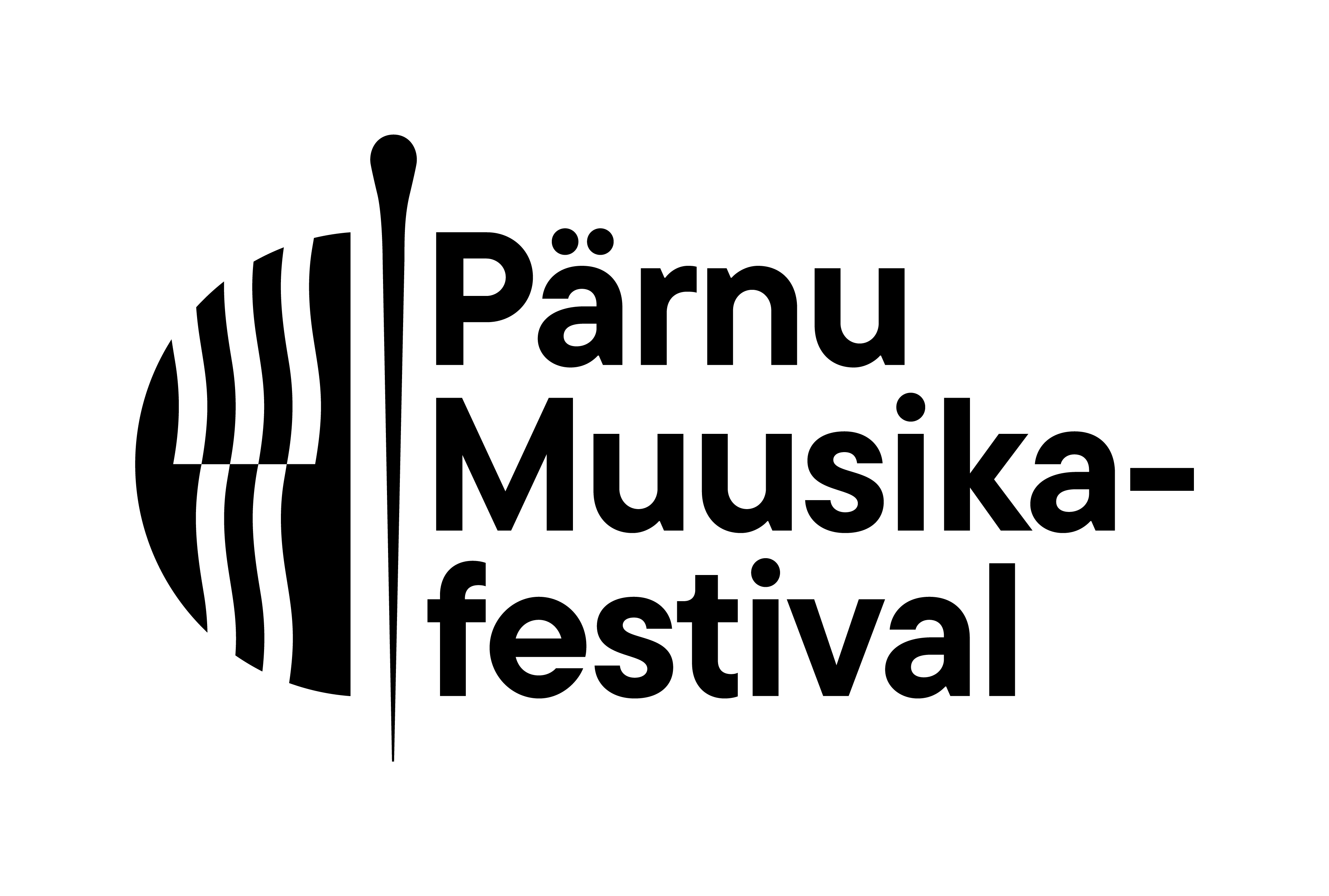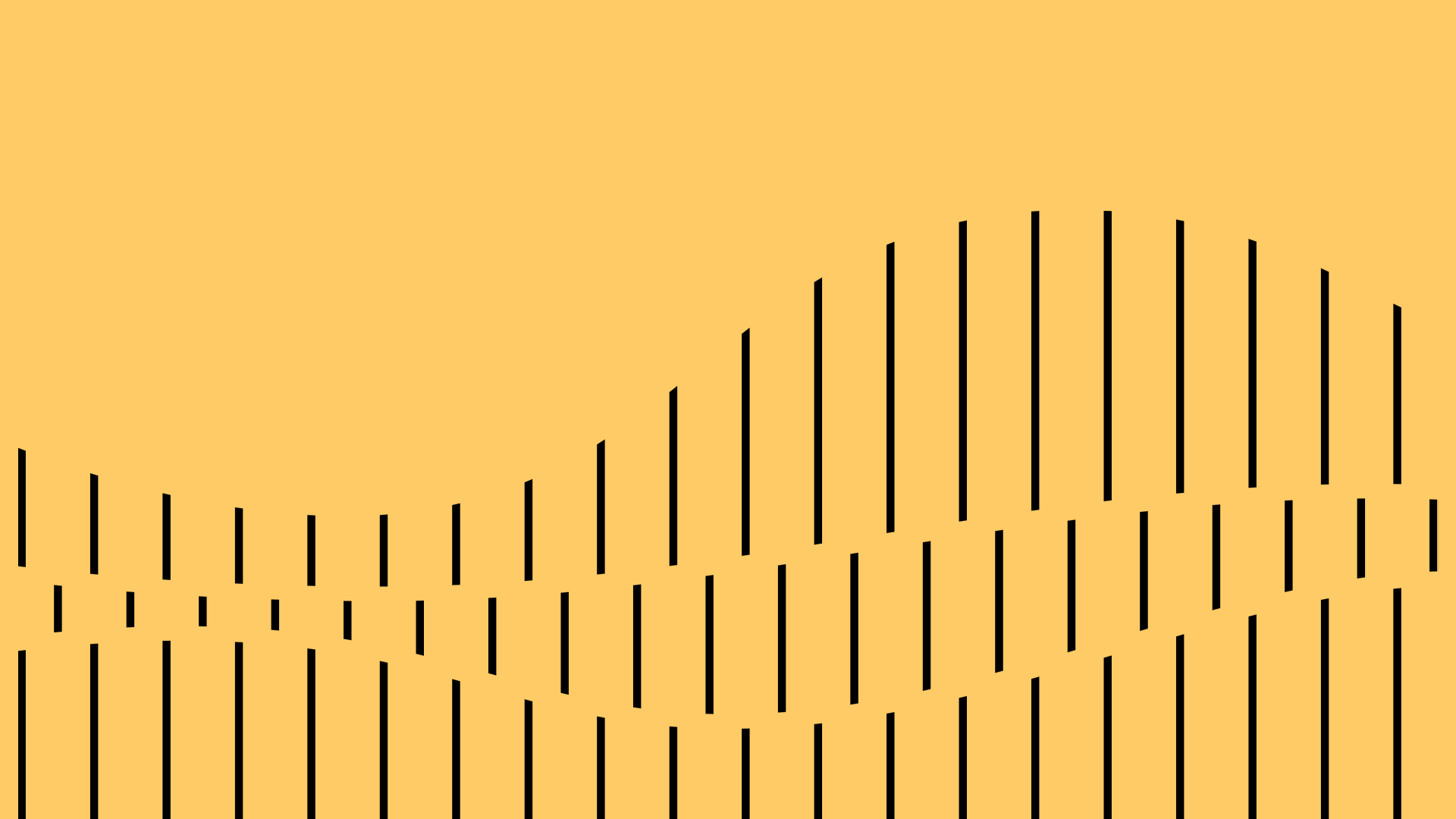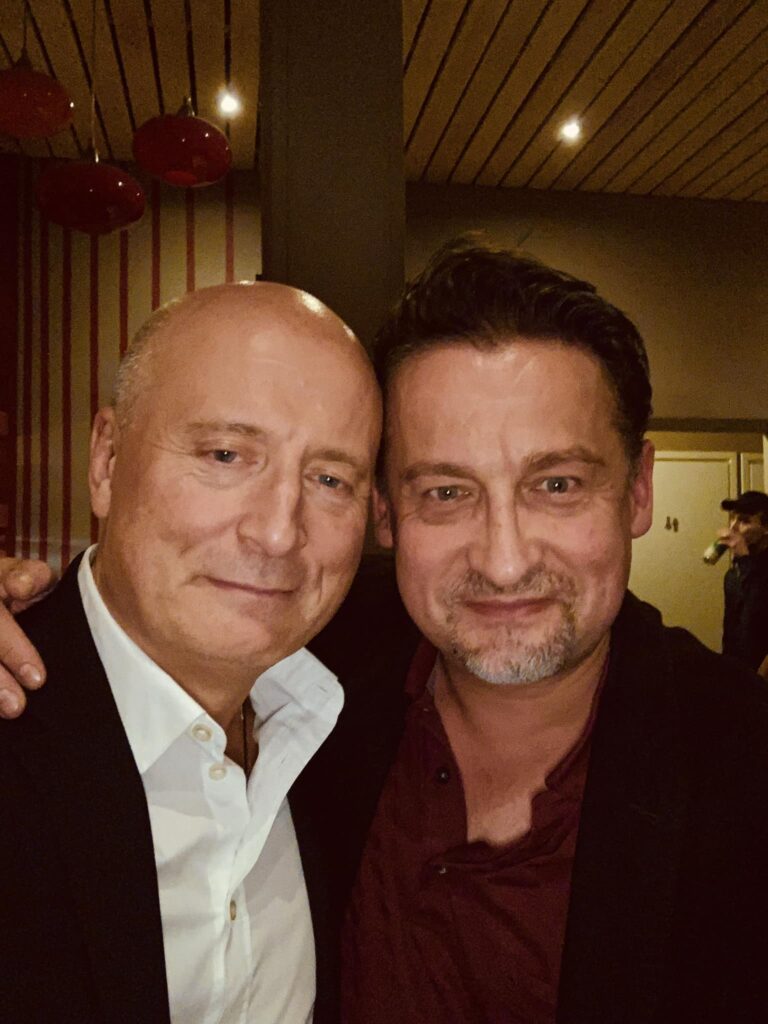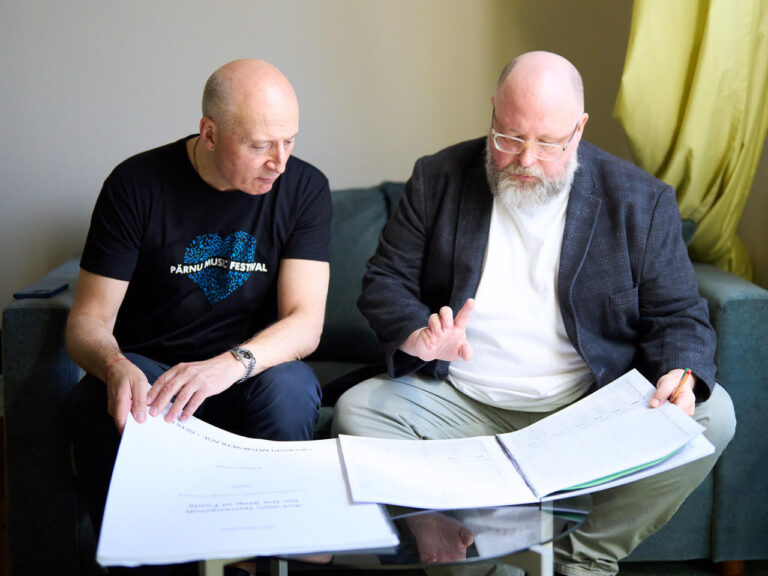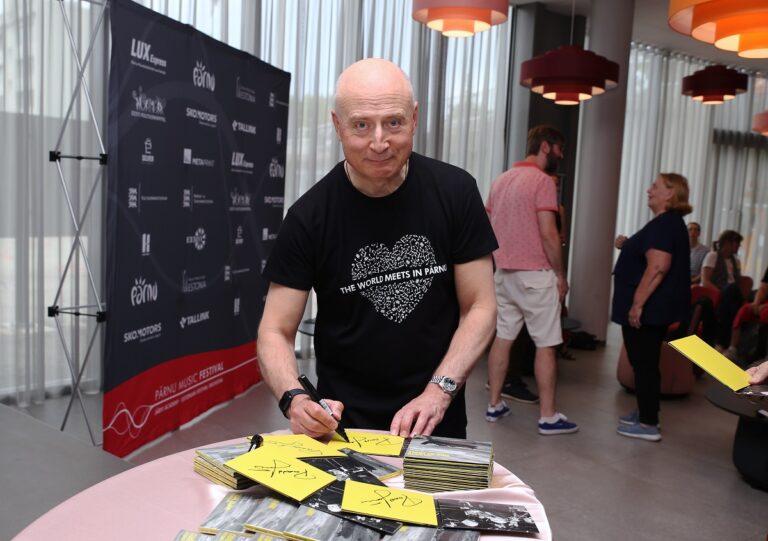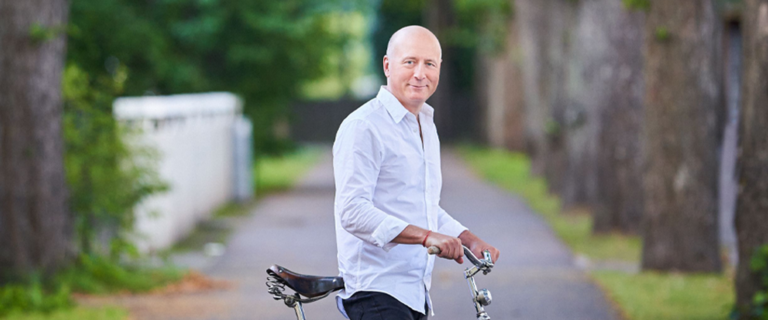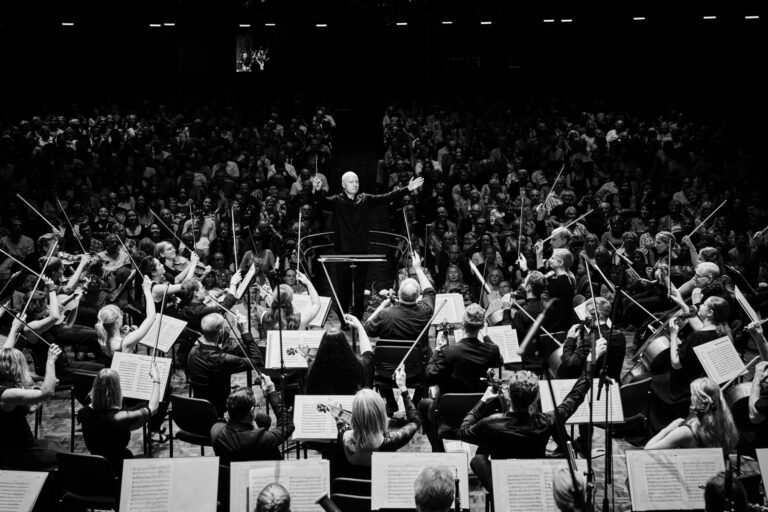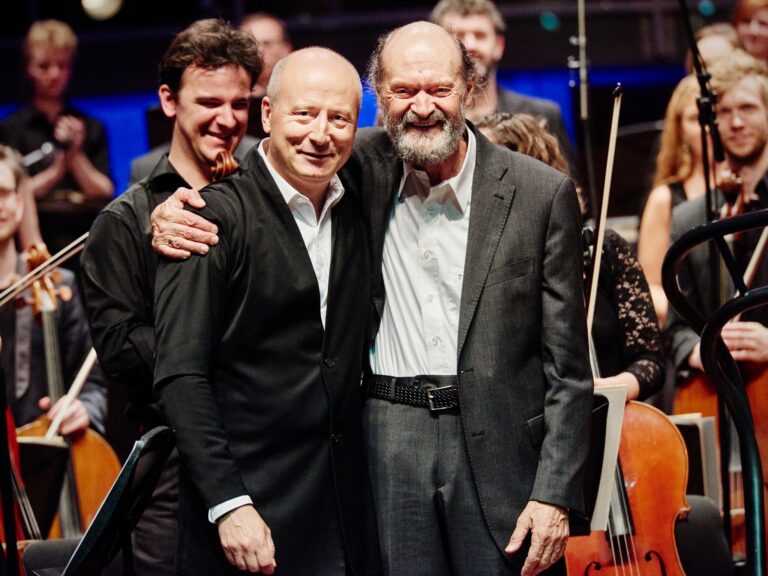2025-07-22
The Pärnu Music Festival has a lot to offer that others don’t. And I don’t just mean the opportunity to combine the summer pleasures of a beautiful sandy beach and spas with culture, but a phenomenon called the Estonian Festival Orchestra.
This is the creation of conductor Paavo Järvi. He wanted to create something similar to Ivan Fischer’s Budapest Festival Orchestra. You can add the Luzern Festival Orchestra to the group. All of these bring together top musicians from around the world to do something that would not normally be possible – energy born of inspiration, freedom and encounters, unencumbered by the pressures of a permanent institution.
The core of the Estonian Festival Orchestra is Estonian musicians working abroad, whom
Paavo Järvi complements with his other contacts from the orchestras he conducts and with young Estonian talents. Different types of musicians and orchestral traditions meet in a way that Järvi masterfully knows how to create something new and unique – and perhaps also something that is indicative of the orchestra’s name, as Estonian new music is central to the repertoire.
The group of musicians is a real dream team. The musicians of the Deutsche Kammerphilharmonie Bremen, led by Järvi, such as clarinetist Matthew Hunt and violinist Emma Yoon, are in key positions, which creates their own character in the playing. The concertmaster is the rising star, New Zealander Benjamin Baker, the solo cellist is Thomas Ruge from the Munich Philharmonic, the double bassists are led by Esko Laine from the Berlin Philharmonic, the solo cornetist is Alec Frank Gemmill from the Scottish Chamber Orchestra, etc.
Those with Finnish connections but who are Estonian citizens include cornetist Paula Ernesaks, also from the Berlin Philharmonic, and Mikk Murdvee, conductor and violinist at the Finnish National Opera. There are four representatives of the Järvi dynasty of musicians in the orchestra, and the entire Pärnu Festival has been formed around the Järvi Conducting Academy. Concerts by its students are traditionally part of the program.
It is no surprise that this year the main theme of the program was 90-year-old Arvo Pärt, whose music is played at almost every concert. You never get tired of it, because there are surprisingly many different sides to Pärt, although the basic style always remains recognizable. In the concerts I heard of the Estonian Festival Orchestra, La Sindone (2005/2022), Sihouette (2009) and Tabula rasa (1977) were played.
La Sindone is a meditation inspired by the Christ relic in Turin Cathedral, which rises from silence to a climax that shakes the church’s domes. Sihouette’s starting point is the Eiffel Tower, whose architecture’s airiness and strength are captured in the work. Paavo Järvi achieves the magic of the super hit Tabula rasa by emphasizing fluidity and inner glow. The soloists were Hans Christian Aavik and Mari Poll.
The latest Estonian music was represented during my visit by Erkki-Sven Tüür and Elis Hallik. Tüür is a master of writing for orchestra – Magnus Lindberg comes to mind as a comparison, but with a very different style. Tüür’s works are always full of rich texture and captivating sounds. The oboe concerto “Desert Wind”, which premiered last year, was also proof of this. Tüur has come a long way from a fusion style combining tonality and atonality to a mathematical compositional style in which music is created from “vectors”, small seeds towards larger forms. Now he has also abandoned vectors and makes music free from chains, often based on visual and narrative inspirations.
In the Oboe Concerto, as the name suggests, the desert wind blows, shaping the terrain and rocks over centuries. This whirlwind is heard in the virtuosically swaying textures of the solo oboe, which form a concerted tension with the orchestral themes.
The orchestral textures grow increasingly dense, awakening the oboe, which has been chirping in pastoral moods, and taking it with it into deeper depths. But the work is by no means a mere description of nature; the organic forms begin to be distorted by human activity. The work begins to describe more and more the modern world that is derailing. The jazz rhythms are not entertaining but take on a sinisterly grimacing expression.
In this way, Tüur creates a drama about the relationship between nature and man with his work, which does not end well. The oboe stem contains micro-intervals and special playing styles such as flatterzungs, which soloist Kalev Kuljus masterfully integrated into the whole. The soaring cadence was an individual’s tightrope walk above a chaotic world. Kuljus threw himself fully into the work’s contradictions, but still always maintained a sense of virtuoso ease. Paavo Järvi and the musicians of the festival orchestra created a captivating stormy landscape that shook the listener.
The premiere of Elis Hallik’s Oiriri (from Latin “to rise”, “to appear”) took us to completely different worlds, although it is also based on the magic of orchestrations. At the beginning, Hallik creates an image of a magical garden where time ceases to exist. According to the composer, it is a place “between childhood and eternity, where beauty needs no explanation and where peace reigns, which is still not silence but a living, pulsating present.”
The work reflects feelings during the anniversary year of Arvo Pärt, and it can be heard as a statement to Pärt’s tradition. It strives for the same feeling of holiness but by different means, with spatial effects created by spectral sounds, elements that break harmony and transformations. As if unexpectedly, I also sensed Sibelius’ Tapiola in the background. It is certainly a long way from the Nordic forest to the Garden of Dreams, but the same relationship with nature and thematic commonalities could be heard.
The main number of both concerts was Stravinsky’s Firebird series (1919), which was a good
example of the magic created by Paavo Järvi for his festival orchestra. Rarely does one get
such a strong impression of a conductor stepping aside and lifting the musicians to shine –
while still pulling the strings in the background so that a common, coherent and powerful
vision is created.
The world of the Russian fairy tale opened up with the magic of sound, which connected Stravinsky to the other works of the concerts. The Pärnu Concert Hall has echoing acoustics, which brought everything close to the listener. The music was felt in the body, and the communication between the musicians was tangible.
Before the festival orchestra concerts, Kristjan Järvi brought his own Nordic Pulse orchestra to the stage, with which he has made experimental productions, combining the aesthetics of classical and light music. This time, he wanted to reflect the world of Arvo Pärt by weaving other meditative works or excerpts from works around six of Pärt’s works – from Bach to Coldplay and the musicians’ own compositions.
The idea was good, but the execution left much to be desired. Pärt’s ingenious creations were lost in a motley mess. Kristjan Järvi had apparently aimed for a film-music-like, uninterruptedly flowing landscape, but I get pimples when, for example, a few minutes of the Adagietto from Mahler’s Fifth Symphony are played, and the works are immersed in electrical amplification in a way that makes everything even more noisy.
In this acoustics, there would have been no need for electrical amplification, which often made the sound of the strings unpleasant. The light show did not save the whole thing either. However, the enthusiasm on the faces of the young musicians shone, promising that the project could have a future.
